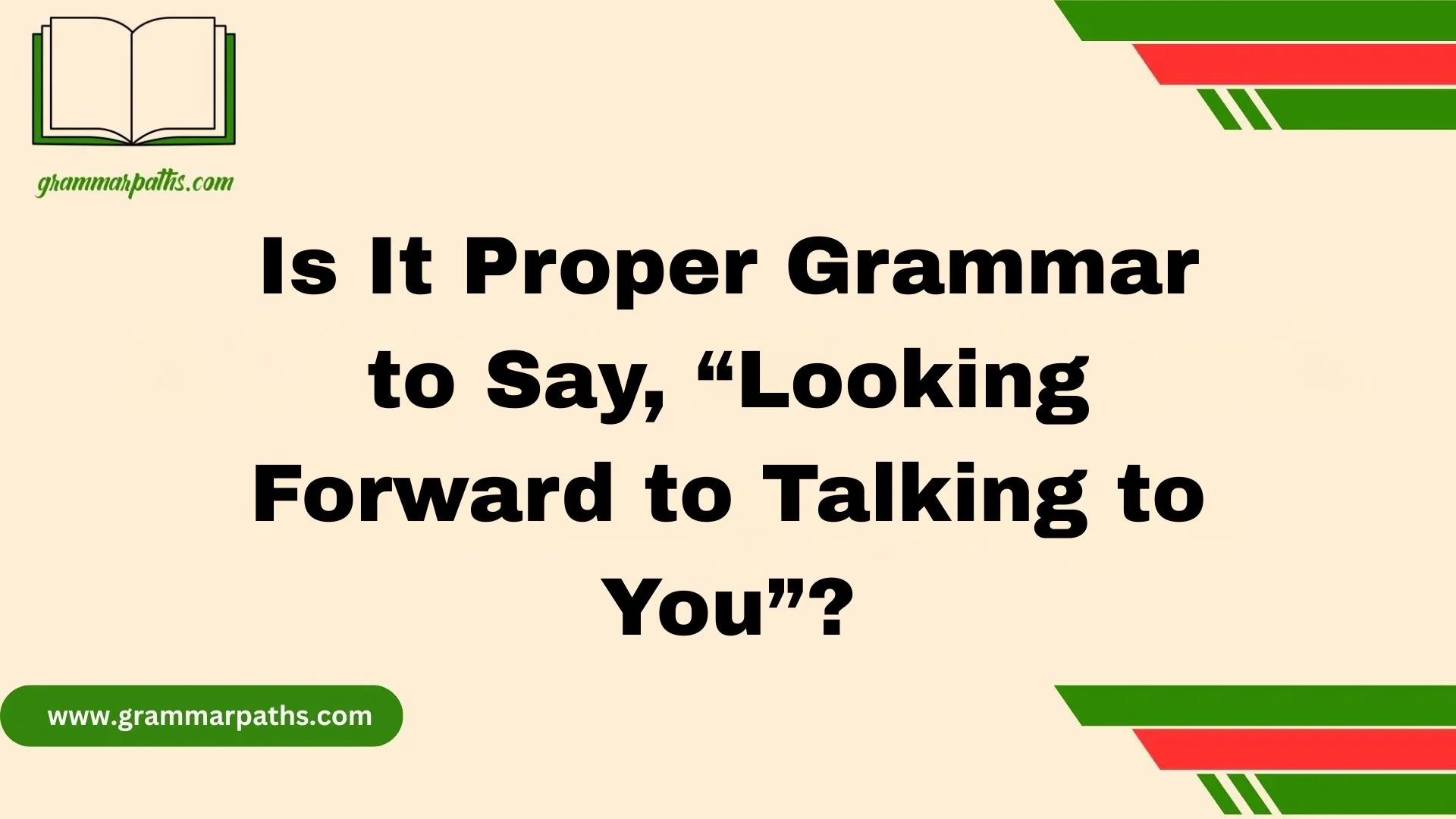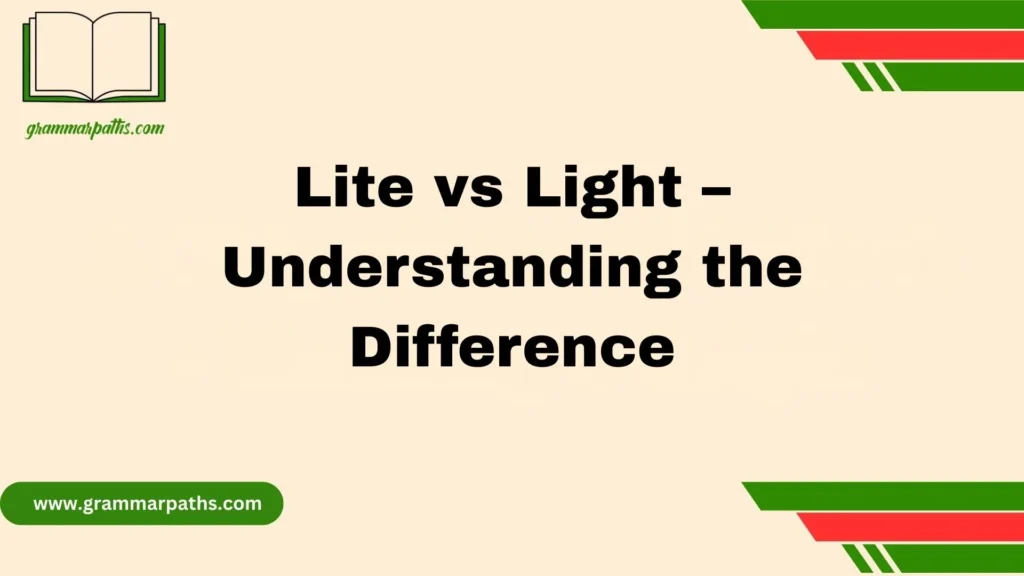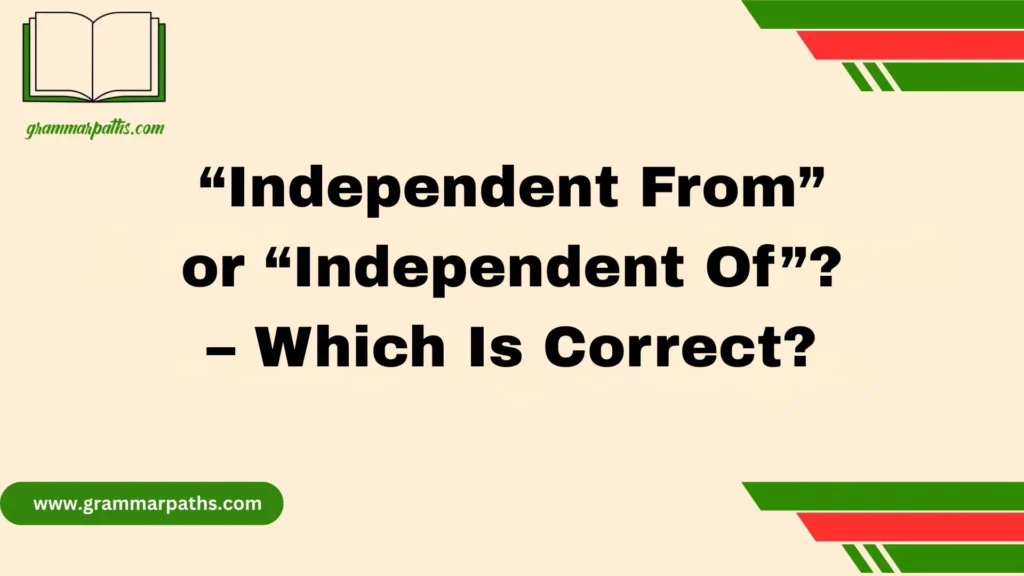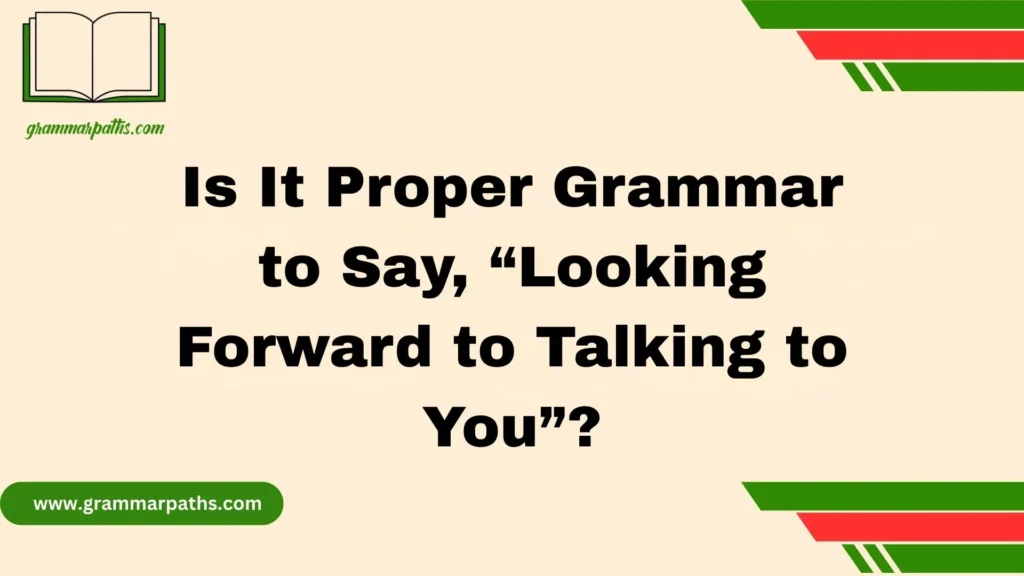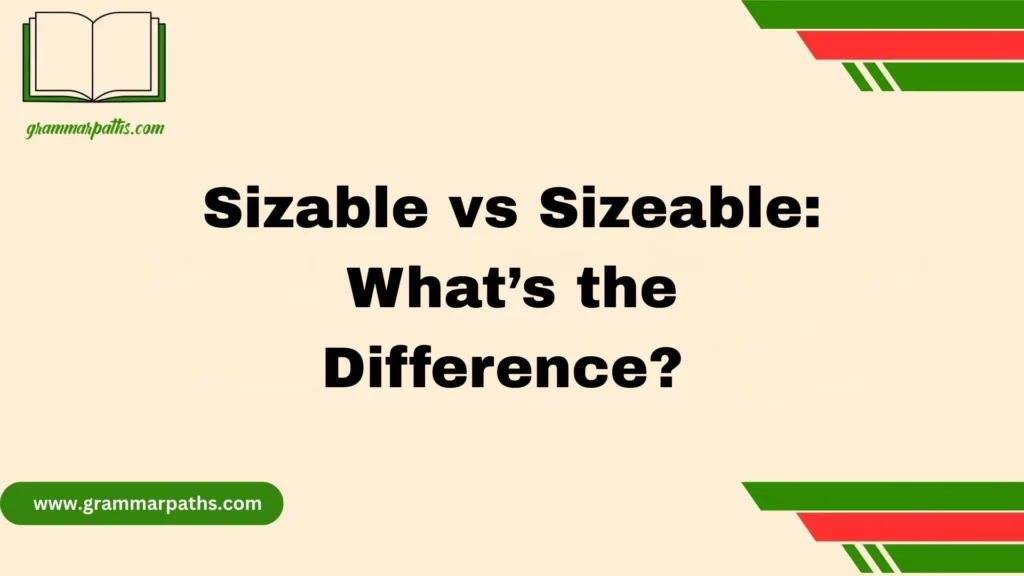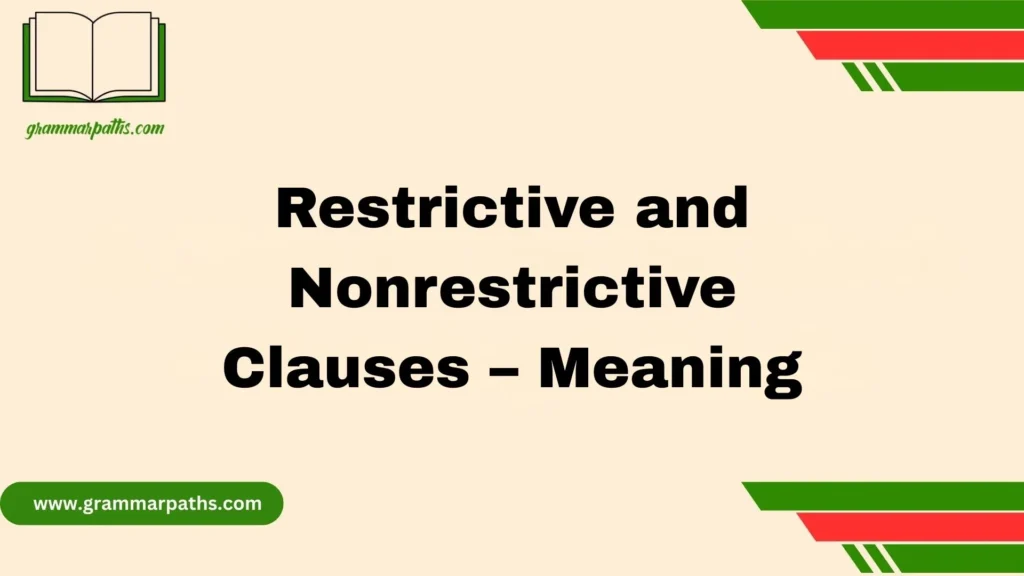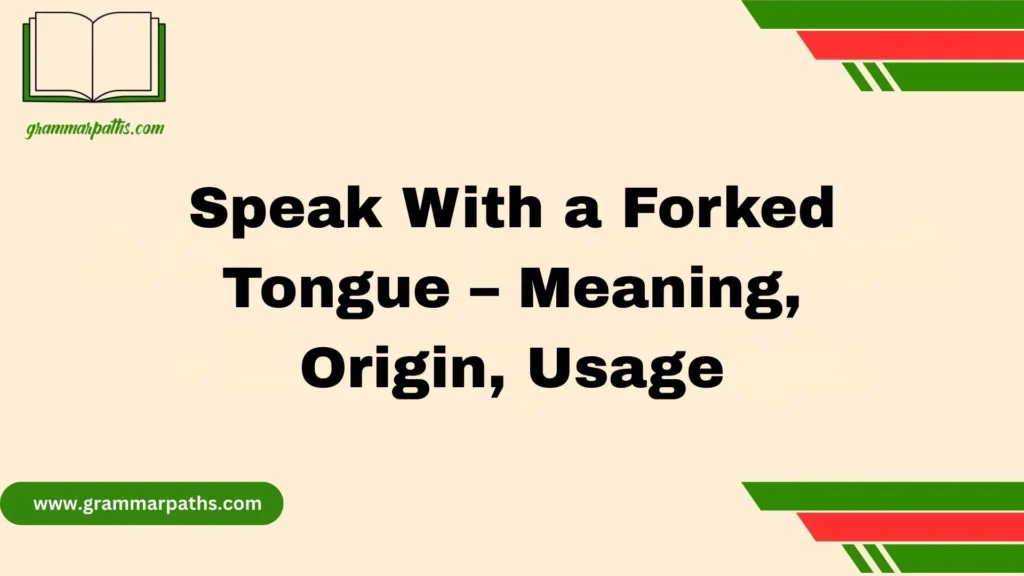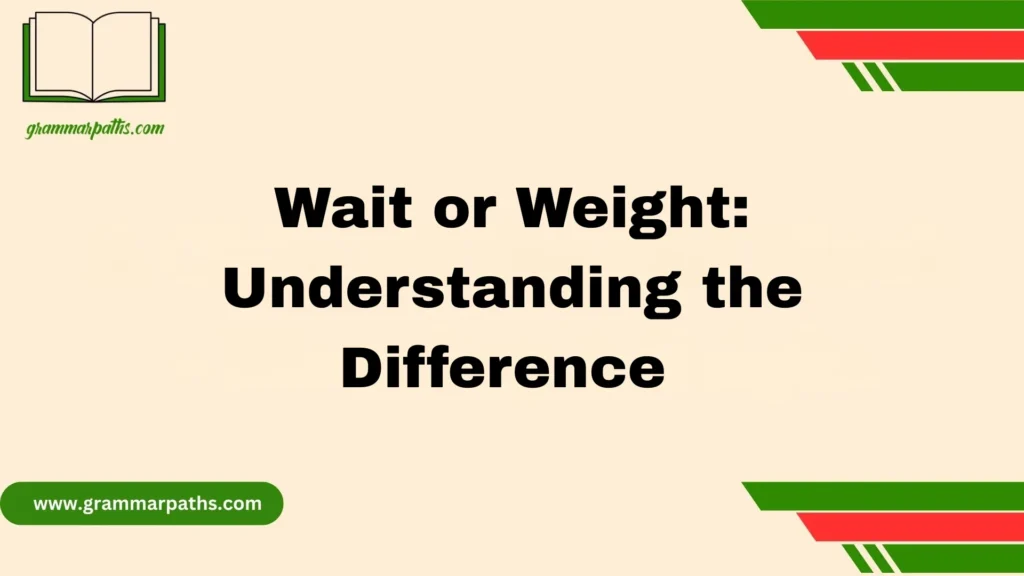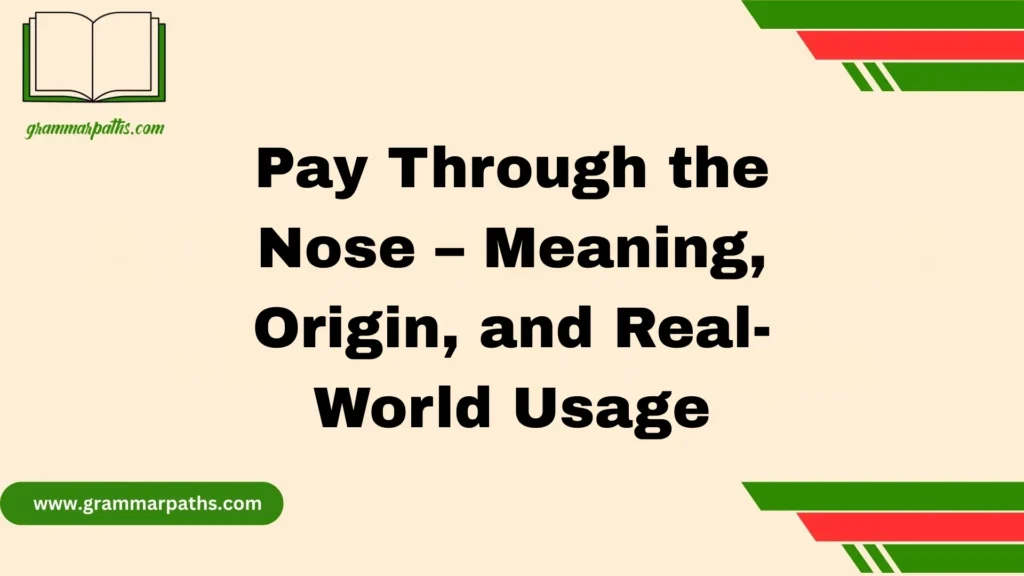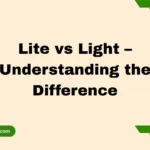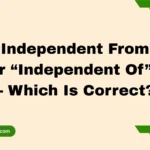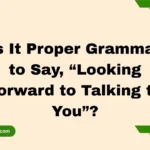Grammar can feel like a tricky beast when a phrase such as looking forward to talking to you makes your head spin. Many learners and linguists have been stumped by its rule and structure, unsure if it’s truly proper or just a linguistic conundrum. Yet, this grammatical puzzle has become a common, acceptable, and even preferred form in formal and informal settings alike. From writing professional emails to messages, I’ve personally faced the worry of committing a faux pas, wondering, “Is It Proper Grammar to Say, ‘Looking Forward to Talking to You’?” But with time, and through real revelations from business communication and language patterns, I learned how this expression perfectly conveys anticipation, polite excitement, and a friendly closing remark, giving every conversation a touch of confidence and warmth.
In English, the mechanics of this phrase are built on gerunds, prepositions, and form. Using “looking forward to talking to you” employs a gerund, not an infinitive, aligning with standard usage. Whether you’re managing job applications, preparing for interviews, or engaging in networking follow-ups, this expression feels natural, practical, and stylistically appropriate. In my own professional life, I’ve seen how such phrases shape corporate, customer, and recruiter interactions, softening the tone and reflecting genuine professionalism. By mastering these subtle elements of grammar and communication, you can strategically express your eager intent, ensuring your message remains clear, grammatically correct, and culturally appropriate across all industries.
Why “Looking Forward to Talking to You” Causes Confusion
Let’s start with why people question this phrase in the first place.
The confusion usually comes from the word “to.” Most of us were taught that “to” introduces an infinitive verb — like to eat, to drive, or to talk.
So naturally, “Looking forward to talk to you” might sound correct. But here’s the twist: in this expression, “to” isn’t part of an infinitive verb. It’s a preposition that belongs to the phrasal verb “look forward to.”
Because “to” here acts as a preposition, the word that follows must be a noun or a gerund (a verb ending in -ing that acts like a noun). That’s why we say:
- Correct: “Looking forward to talking to you.”
- Incorrect: “Looking forward to talk to you.”
In other words, “talking” isn’t a mistake — it’s exactly what English grammar requires.
What “Looking Forward to Talking to You” Really Means
At its core, this phrase expresses anticipation and positive expectation.
When you say “I’m looking forward to talking to you,” you’re telling someone you’re happy or eager to have a conversation soon. It’s polite, friendly, and adds warmth to your communication.
Common Contexts Where It’s Used
- Business communication: “I’m looking forward to talking to you about next steps.”
- Interviews: “Looking forward to talking to you during the interview.”
- Networking: “Looking forward to talking with you at the event.”
- Customer service: “We look forward to talking to you about your account.”
It’s especially common in American workplace communication, where politeness and approachability are valued.
Tone and Intent
The tone of this phrase is:
- Positive and polite
- Professional but friendly
- Warm without being too casual
It’s one of those rare expressions that works well in both formal and informal writing, depending on how you structure the rest of your message.
Grammar Breakdown: How the Phrase Works
To really understand why it’s correct, let’s break it apart grammatically.
| Part | Function | Explanation |
| Looking forward | Phrasal verb | Expresses eagerness or anticipation |
| to | Preposition | Belongs to “look forward to,” not an infinitive |
| talking | Gerund | Acts as the object of the preposition “to” |
| to you | Prepositional phrase | Indicates the person being referred to |
Rule Recap
After the phrase “look forward to,” always use a noun or gerund (verb + ing), not the infinitive.
Examples:
- Correct: “Looking forward to meeting you.”
- Correct: “Looking forward to working with you.”
- Incorrect: “Looking forward to meet you.”
That’s why “Looking forward to talking to you” is grammatically correct and natural.
The Gerund vs. Infinitive Rule
Let’s simplify this classic grammar challenge.
What’s a Gerund?
A gerund is a verb that ends in -ing and acts like a noun.
Examples:
- Running helps relieve stress.
- Reading improves your vocabulary.
What’s an Infinitive?
An infinitive is the base form of a verb, usually preceded by “to.”
Examples:
- I want to read more books.
- She needs to finish her work.
Key Difference
Some verbs in English are followed by a gerund, others by an infinitive — and a few can take both, depending on meaning.
| Verb | Takes Gerund | Takes Infinitive |
| look forward to | ✅ Yes | ❌ No |
| enjoy | ✅ Yes | ❌ No |
| hope | ❌ No | ✅ Yes |
| decide | ❌ No | ✅ Yes |
So, with “look forward to,” the next word must always be a gerund.
Examples:
- ✅ “I look forward to meeting you.”
- ✅ “We’re looking forward to working together.”
- ❌ “I look forward to meet you.”
“Talking To” vs. “Talking With” — Which Is Correct?
Both are correct — but they carry slightly different tones.
| Phrase | Meaning | Tone | Example |
| Talking to | One-directional; implies one person leads the discussion | Slightly formal | “I’m looking forward to talking to you about your proposal.” |
| Talking with | Two-way; suggests a balanced conversation | Friendly and collaborative | “Looking forward to talking with you at the event.” |
Quick Rule of Thumb
- Use “talking to” in formal or business settings.
- Use “talking with” in casual or friendly conversations.
Both sound natural in American English, so choose based on the tone you want to strike.
Why We Drop “I’m” — The Grammar Behind It
In everyday English, we often omit “I’m” before “looking forward to talking to you.”
Technically, the full sentence should be “I am looking forward to talking to you.” But it’s common to leave out “I’m” when writing short, polite closings in emails.
Examples
- Formal: “I am looking forward to talking to you about the proposal.”
- Neutral: “Looking forward to talking to you soon.”
- Friendly: “Can’t wait to talk to you!”
When to Use the Full Version
- Use “I’m looking forward to…” in formal business correspondence (job applications, client emails).
- Use “Looking forward to…” in friendly or semi-formal contexts (internal team messages, quick follow-ups).
Tip: If your email already includes your name and title, the shorter version sounds more natural and less repetitive.
Common Mistakes and How to Avoid Them
Let’s fix the most common errors people make with this phrase.
| Incorrect | Explanation | Correct |
| “Look forward to talk to you” | Uses infinitive instead of gerund | “Look forward to talking to you” |
| “Looking forward for talking to you” | Wrong preposition (“for”) | “Looking forward to talking to you” |
| “Look forward talking to you” | Missing preposition “to” | “Look forward to talking to you” |
Memory Trick:
After “look forward to,” always add a word ending in -ing.
Example:
- ❌ “Look forward to see you.”
- ✅ “Look forward to seeing you.”
Professional Alternatives (and When to Use Them)
Sometimes you want to say the same thing but sound a little different. Here are alternatives that work in different contexts.
| Tone | Phrase | Example |
| Formal | “I’m eager to discuss this further.” | “I’m eager to discuss this with you next week.” |
| Neutral | “Excited to connect soon.” | “Excited to connect about your proposal.” |
| Friendly | “Can’t wait to chat with you!” | “Can’t wait to chat with you next week!” |
| Professional | “Looking forward to our conversation.” | “Looking forward to our conversation later today.” |
These variations keep your emails and messages fresh without losing professionalism.
Cultural Note: How Americans Use the Phrase
In the United States, “Looking forward to talking to you” is a staple in professional communication. Americans favor expressions that sound positive, warm, and respectful without being overly formal.
Common Use Cases
- Corporate emails: “I’m looking forward to talking to you about our upcoming collaboration.”
- Recruitment: “Looking forward to talking to you during the interview process.”
- Networking: “I look forward to talking with you at the conference.”
Regional Differences
- British English: Tends to prefer “speaking with you” instead of “talking to you.”
- Australian English: Often uses “catching up with you soon.”
- American English: “Looking forward to talking to you” is perfectly natural and widely accepted.
Summary: How to Use “Looking Forward to Talking to You” Correctly
Here’s a quick recap of everything you need to remember:
- It’s grammatically correct.
“Looking forward to” is a phrasal verb that takes a gerund. - Always use the -ing form.
Say “talking,” not “talk.” - Tone flexibility.
Works in both formal and casual communication. - Avoid common mistakes.
Never write “looking forward for talking to you.”
Examples
- “I’m looking forward to talking to you next week.”
- “Looking forward to talking with you soon.”
- “I look forward to talking to you about the project update.”
Example Email
Subject: Great Speaking With You
Hi Jordan,
Thanks for your time today. I’m looking forward to talking to you next week to go over the details.
Best regards,
Amanda
Visual Grammar Breakdown
To make it even clearer:
look forward to + (noun / gerund)
Examples:
- Look forward to meeting you.
- Look forward to hearing from you.
- Look forward to talking to you.
Never:
- Look forward to meet you.
- Look forward to talk to you.
Case Study: Professional Email Communication
Scenario:
A sales manager is following up with a potential client after a product demo.
Incorrect:
“I look forward to talk to you about next steps.”
Correct:
“I look forward to talking to you about next steps.”
Why It Matters:
The correct version not only follows proper grammar but also projects professionalism and attention to detail — key elements in business communication.
In the American workplace, grammatical precision builds trust and credibility. Small errors, especially in written communication, can subtly influence how your professionalism is perceived.
Quick Reference Table
| Phrase | Correct? | Reason |
| Looking forward to talking to you | ✅ | Correct and natural |
| Looking forward to talk to you | ❌ | Uses infinitive instead of gerund |
| Looking forward for talking to you | ❌ | Wrong preposition |
| Looking forward to speaking with you | ✅ | Correct, slightly more formal |
| Look forward to meeting you | ✅ | Polite and professional closing |
References and Reliable Sources
- Merriam-Webster: Definition of “look forward to”
- Grammarly: Gerunds vs. Infinitives
- Cambridge Dictionary: Look forward to
FAQ: Common Questions About “Looking Forward to Talking to You”
Is “Looking forward to talk to you” grammatically correct?
No. You must say “Looking forward to talking to you.” The “to” in this phrase is a preposition that requires a gerund.
Can I say “Look forward to speak with you”?
No. The correct form is “Look forward to speaking with you.”
Is this phrase too casual for a formal email?
Not at all. It’s widely used in formal business writing in the United States.
What’s a more formal alternative?
You can say, “I look forward to speaking with you,” or “I am eager to discuss this further.”
Conclusion
In the end, understanding whether it’s proper grammar to say “looking forward to talking to you” comes down to recognizing how English grammar naturally evolves in both formal and informal settings. The phrase isn’t a faux pas—it’s a respectful, polite, and professional way to express anticipation and excitement in everyday communication.
Whether you’re crafting emails, attending interviews, or building business connections, using it with confidence, clarity, and warmth will always leave a friendly and professional impression. By mastering its mechanics and applying it strategically, you not only follow the rules of grammar but also communicate with genuine professionalism and eager intent.

Emma Brooke is a passionate language expert and contributor at GrammarPaths.com, where she helps learners navigate the complexities of English grammar, idioms, and effective writing. With a strong academic background and years of teaching experience, Emma excels at turning tricky grammar rules into simple, practical lessons that readers can easily grasp.
